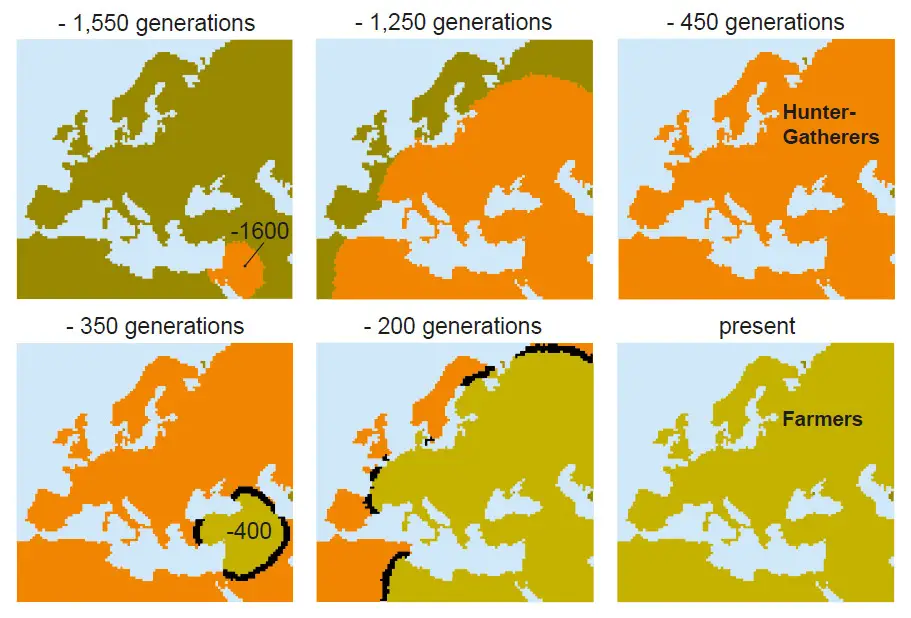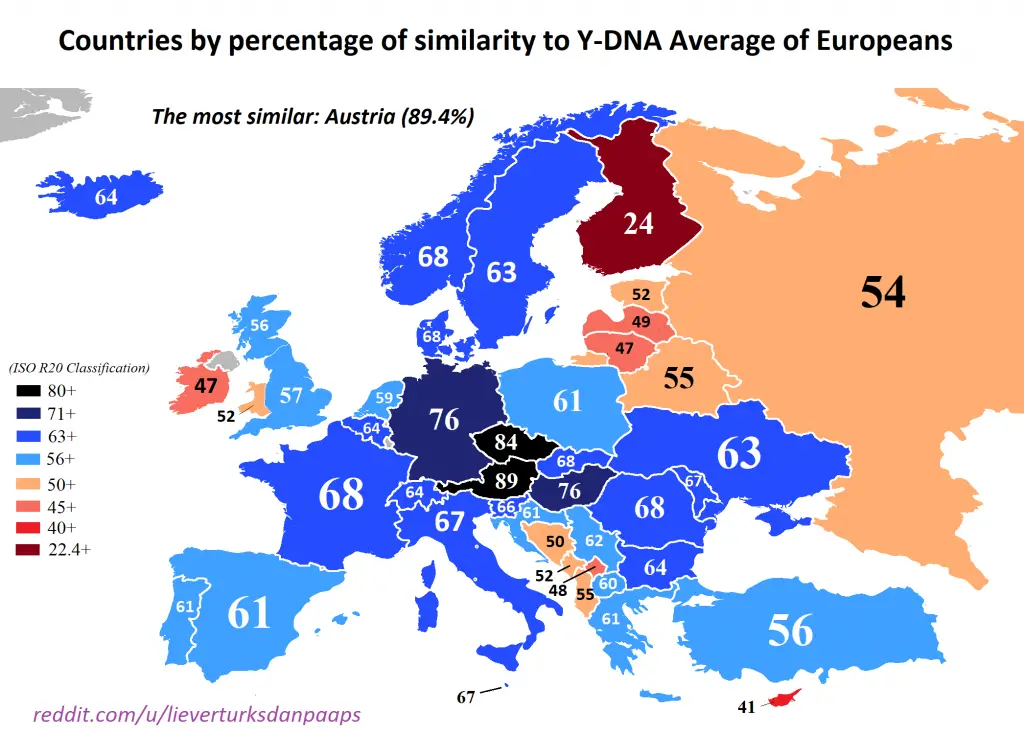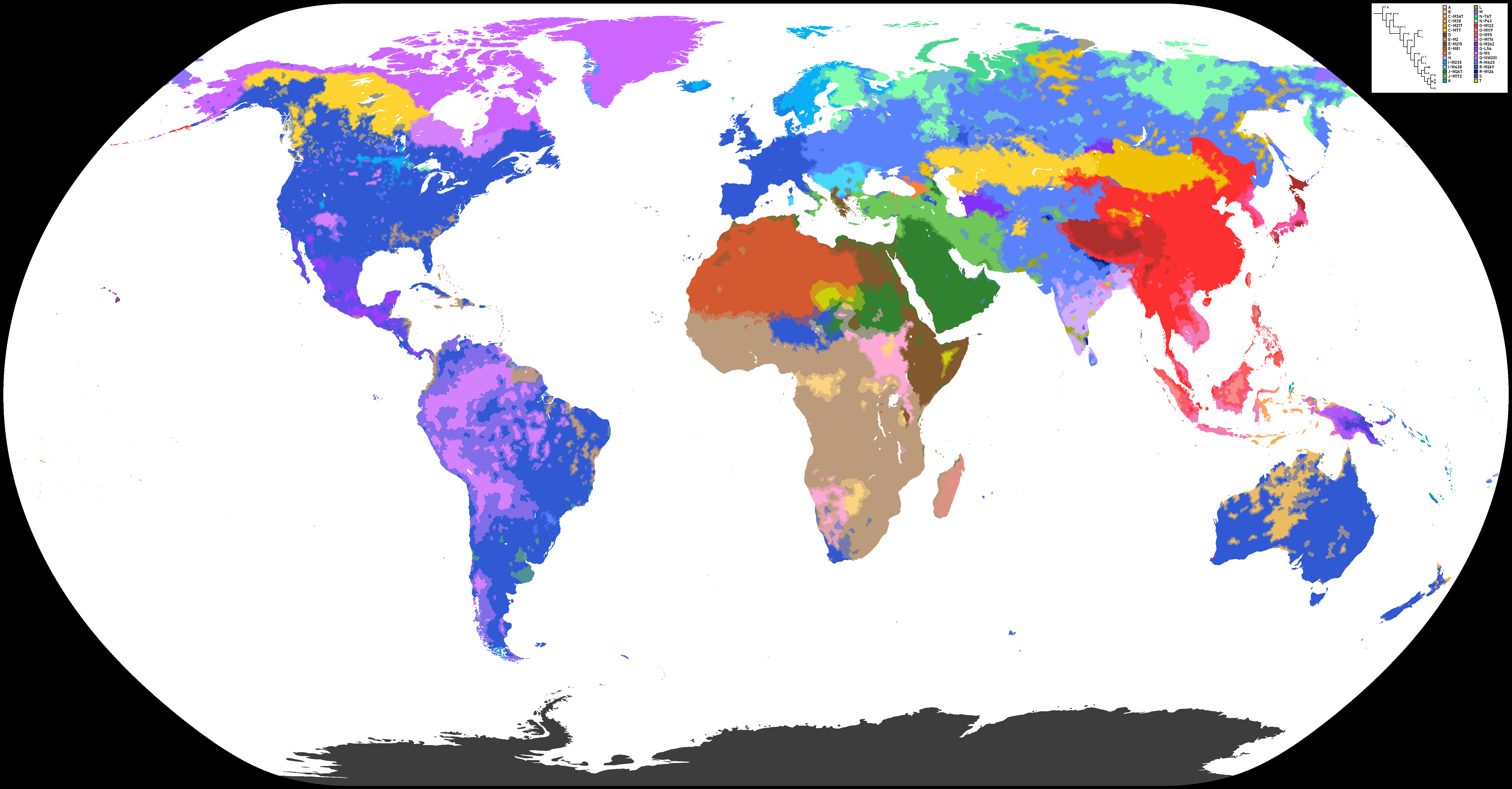Dominant Y-DNA haplogroups in Europe and the Middle East
Table of Contents
The genetic history of Europe since the Upper Paleolithic is inseparable from that of broader Western Eurasia. By about fifty thousand years ago, a basal West Eurasian lineage had appeared out of the undifferentiated “non-African” ancestors of seventy thousand years.
European early modern human lineages between 40 and 26 thousand years BP still part of a large Western Eurasian “meta-population,” linked to Central and Western Asian populations. The division into genetically separate sub-populations in Western Eurasia is a consequence of enhanced selection pressure and founder effects during the Last Glacial Maximum.
By the end of the Last Glacial Maximum (21 thousand years), called West European Hunter-Gatherer lineage, appears from the Solutrean refugium during the European Mesolithic (12.7 thousand years). All tested Mesolithic, West European Hunter-gather, Y-chromosomes from Luxembourg and Motala (Sweden), related to haplogroup I. Haplogroup I is the primary candidate for Europe’s indigenous Y-haplogroup, which is today the most prevalent Y-haplogroup in most of Scandinavia.
These Western hunter-gatherer societies are considerably displaced in the Neolithic Revolution by the arrival of Early European Farmers lineages derived from Mesolithic populations of West Asia (Anatolia and the Caucasus).

In the European Bronze Age, there were again extensive population replacements in parts of Europe by the invasion of Ancient North Eurasian ancestors from the Pontic–Caspian steppes. These Bronze Age population replacements are connected with the Beaker culture archaeologically and with the Indo-European expansion linguistically.
As a consequence of the population shifts throughout the Mesolithic to Bronze Age, contemporary European populations are distinguished by differences in West European Hunter-Gatherers, Early European Farmers, and Ancient North Eurasian ancestry.
According to Sciencemag, blending rates ranged geographically. In the late Neolithic, West European Hunter-Gatherers in farmers in Hungary was at about 10 percent, in Germany almost 25 percent, and in Iberia as high as 50 percent. The contribution of Early European Farmer’s ancestry is more notable in Mediterranean Europe and decreases towards northeastern Europe, where Ancient North Eurasian ancestry is stronger. The Sardinians are defined by almost clear origin from Early European Farmers.
Distribution of European Y-chromosome DNA (Y-DNA) haplogroups by country and region in percentage
Haplogroup is a group of similar haplotypes that share a common ancestor with a single-nucleotide polymorphism mutation. More specifically, a haplogroup is a combination of alleles at different chromosome regions that are closely linked and that tend to be inherited together.
As a haplogroup consists of similar haplotypes, it is usually possible to predict a haplogroup from haplotypes (a haplotype is a group of genes in an organism that are inherited together from a single parent).
Haplogroups pertain to a single line of descent, usually dating back thousands of years. As such, membership of a haplogroup, by any individual, relies on a relatively small proportion of the genetic material possessed by that individual.

A simplified map will look like this.
Map with predominant Haplogroups

The map below shows countries by percentage of similarity to Y-DNA average of Europeans.

Residents of Austria have the highest percentage of similarity to the Y-DNA average of Europeans (89.4%).
What will the political map of Europe look like if you use genetics for state division?
What if borders were drawn by DNA instead of ethnicity?










European countries with the hypothetical average European group.
that the middle of Europa has the highest rate makes sense, as it is mixed from all other sides. this is logical.
so this area was over centuries always the high nest for all kinds of great people in arts and science – but always in relation of the present society let them do and grow.
other areas depend on movements, migrations for more than many thousand years.
No, it just shows Deutschland is genetic hotchpotch.
The maps are very general. I know my lineage a bit back to sicily, Bari and Gypsy. One map here says I am close to mideast(correct) and the other in nation by geneotpye i am not placed correct.
Generaly not a single map here is about you or your lineage…
From that mix that you claim to have it is also clear that there is no posibility to create map that would have place for you.
Gypsy came from Pakistan/North India and they loved to snatch new blood(mostly young girls when they were traveling from one place to another).
It looks more like Czechs were Celtic people and dominated geneticaly for the longest period of time in the center of Europe.
Vienna was established 500BC and Germans started to settle there when it was Slavic city -> 1200 years after its creation.
Berlin was also West-Slavic place(Polabian -> Lechitic ->pre-christian Polish people).
Generally, in typical German style, you have turned thousands of years of brutal German invasions of their neighbors into “great people” and giving the Germans “peace” is nothing more than acting less agressive and brutal as they loved to not leave any man alive behind…
Earlier this year, a genetic study of the expansions in the first millennium was published in Nature and it came out that the Germans had two such periods in the first millennium before the Vikings took over at the end of the first millennium. and quite a few of those “German greats” were not German by origin at all.